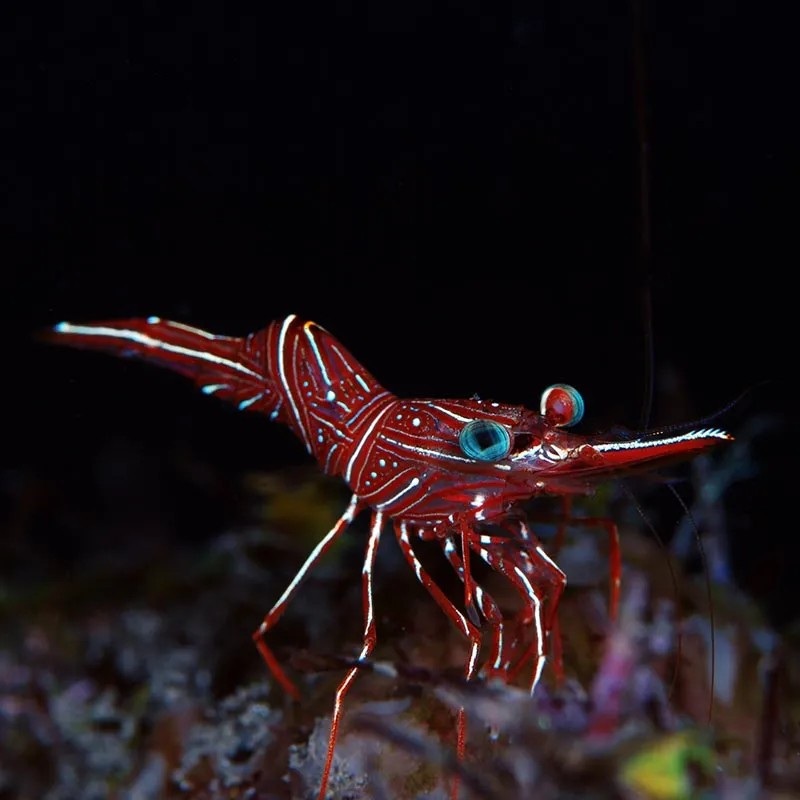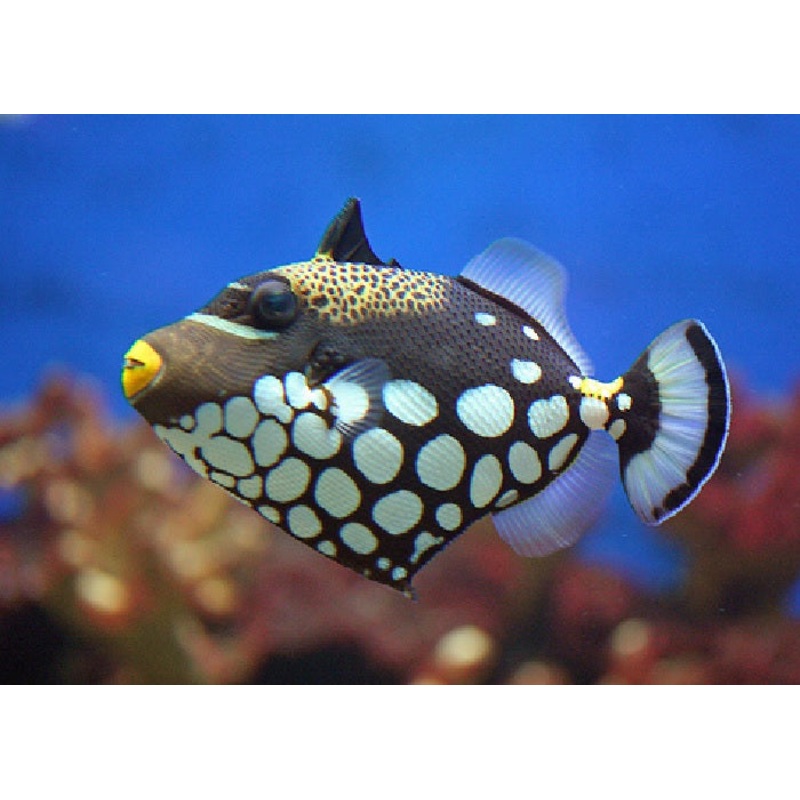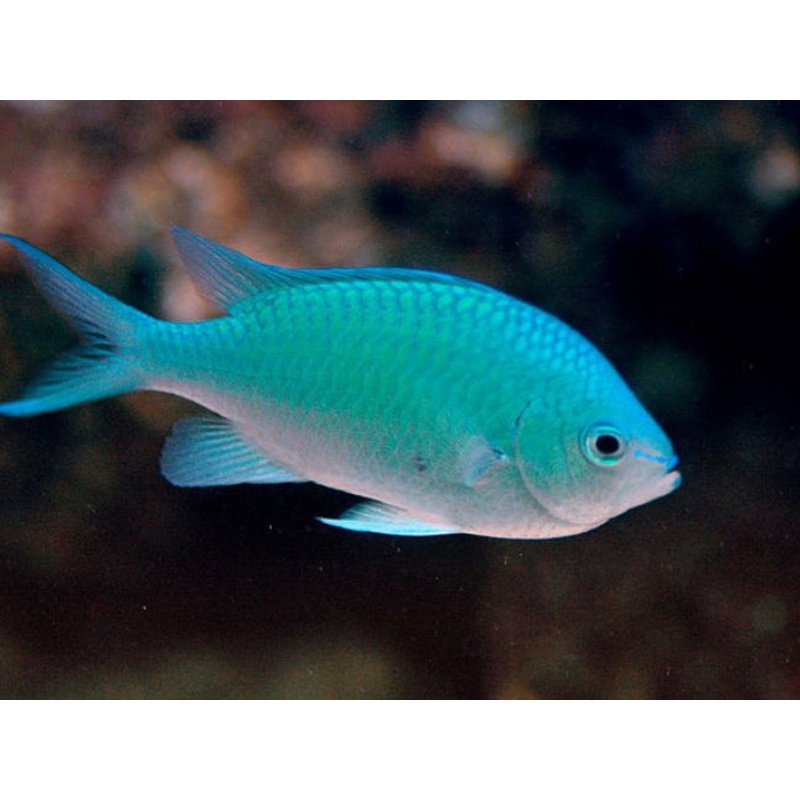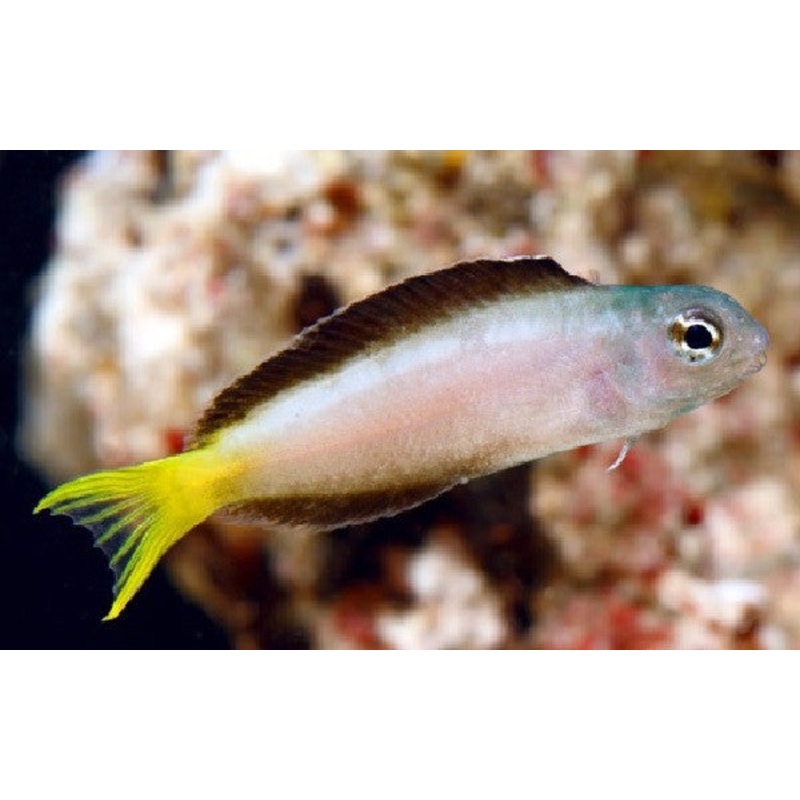Description
SALTWATER FISH IS FOR ONLINE ORDER AND PRE-ORDER ONLY (NOT FOR IN STORE PURSHASES)
Species: Dancing Shrimp (Rhynchocinetes durbanensis) Common Names: Durban Dancing Shrimp, Humpback Shrimp, Camel Shrimp Natural Habitat: Commonly found in coral reefs and rocky crevices in the Indo-Pacific region, especially around the Red Sea and Indian Ocean. Physical Characteristics: Appearance: Notable for its vibrant red and white coloration with unique humpbacked bodies and long, slender antennae. They have an elegant “dancing” movement, hence the name. Size: Reaches about 1.5-2 inches (3.8-5 cm) in length. Lifespan: Typically lives 1-2 years in captivity with proper care. Habitat Requirements: Tank Size: Minimum of 20 gallons, though a larger tank is preferred for groups. Water Conditions: Temperature: Thrives in warm water between 72-78F (22-26C). pH: Prefers slightly alkaline water, around 8.1-8.4. Aquascaping: Requires plenty of live rock and crevices for hiding. A dimly lit tank or shaded areas are ideal, as they tend to be more active at night. Diet: Primary Diet: Omnivorous; feeds on algae, detritus, and small invertebrates. Supplemental Feeding: Can be fed with small pieces of marine-based foods like brine shrimp, mysis shrimp, and flake or pellet food. Feeding Frequency: Feed small amounts once or twice a day. Compatibility: Temperament: Generally peaceful, though they may occasionally pick at soft corals or small invertebrates. Suitable Tank Mates: Other small, peaceful reef-safe fish and invertebrates. Best kept in groups of its own species to encourage natural behavior. Incompatibilities: Avoid housing with aggressive fish or large predatory invertebrates that may see them as food. Care Level: Difficulty: Moderate; requires stable water parameters and an established tank with plenty of hiding spots. Health Monitoring: Watch for signs of stress or injury, particularly if kept with more aggressive species. Behavior: Unique Movement: Known for its distinctive “dancing” or swaying motion, often seen in groups moving rhythmically. Activity Level: Nocturnal by nature but can adapt to daylight activity in aquariums with subdued lighting. Economic Considerations: Market Demand: Popular among aquarists for its lively behavior and unique appearance. Wholesale Pricing: Moderately priced, though availability may vary. Retail Pricing: Typically affordable and accessible in the aquarium trade. Sustainability and Conservation: Wild Population: Generally stable, though habitat degradation may impact specific regions. Aquaculture Efforts: Limited breeding in captivity; most specimens are wild-caught. Regulations: Encouraging sustainable collection practices helps support long-term conservation. Conclusion: The Dancing Shrimp is a charming addition to reef aquariums, known for its lively “dancing” movements and beautiful red-and-white patterning. With proper tank conditions and peaceful tank mates, this species can thrive and bring a unique aesthetic to any marine setup.







Reviews
There are no reviews yet.